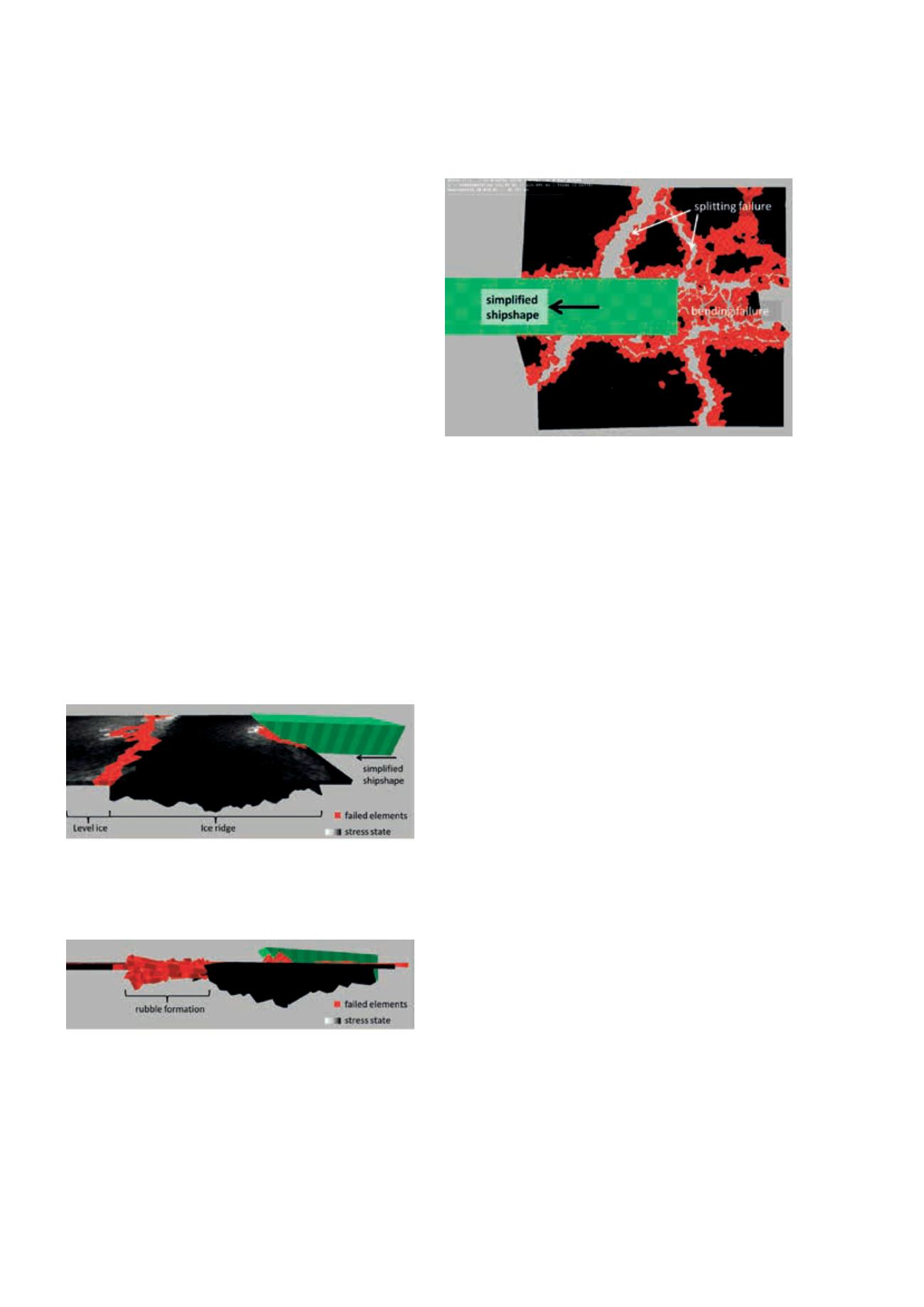

41
SAMC
o
T
• ANNUAL REPORT 2015
Application of multibody dynamics to
model structures – floe ice and ice ridge
interactions
In 2015 PhD candidate Marnix van den Berg continued with
his discrete modelling work of ice ridge – floater interac-
tion. Some simulation examples are shown in Figures
WP4_7-9. Figure WP4_7 shows the simulation of a floating
structure breaking through an ice ridge. We see crushing of
ice (red colour) in the contact zone area between the floater
and the ridge on the right hand-side and ice failing behind
the ridge (on the left side). The rubble formation behind
the ridge is shown in more detail in Figure WP4_8. Figure
WP4_9 shows a ship moving through level ice. Both split-
ting failure and bending failure occur in this simulation.
Van den Berg made progress in combining a lattice model
of the intact ice with a non-smooth discrete element
model of broken ice blocks. The goal of the PhD of Van
den Berg is to develop and apply a numerical modelling
technique that will enable the ice engineering community
to perform discrete simulations of ice-structure interac-
tions within reasonable calculation times and computing
power. He does this by combining two numerical modelling
techniques: the non-smooth discrete element method and
a lattice model. Combining these modelling techniques is
challenging and is an ongoing topic of his research.
Effects of hydrodynamics on the interaction
with level ice
In 2015 PhD candidate Chris Keijdener spent most of his
time working on building a semi-analytical model of ice
structure interaction which can capture the effects of
hydrodynamics.
Although hydrodynamics is an important effect to capture
(see the Figure below), not many of the current models
include it due to its complexity. That is why the focus of
Keijdener’s PhD is to first understand all the aspects of
the hydrodynamics that have a significant influence on
the interaction and then find a simplified way to add these
effects to existing models.
During autumn 2015 the linear interaction model was
completed. The breaking lengths and interaction forces are
found to behave qualitatively differently when compared to
a model which only includes hydrostatics, and their behav-
iour is much closer to that observed in model tests.
However, there were still some discrepancies with the
model test data. The reason for this turned out to be the
nonlinear hydrodynamics terms. To include these, the
semi-analytical model had to be upgraded. This was done
by using the perturbation method to handle the nonlineari-
ties. The upgrade of the model should be finished by early
2016. During this stage of his PhD Keijdener will focus on
trying to find a simpler way to add the effects of the hydro-
dynamics to existing models.
Figure WP4_7. Simulation of a floating structure (green colour)
breaking through an ice ridge. The floater is moving from the
right towards the left.
Figure WP4_8. Simulation showing more details of the rubble
formation depicted behind the ridge.
Figure WP4_9. Simulation of a ship going through level ice.
















